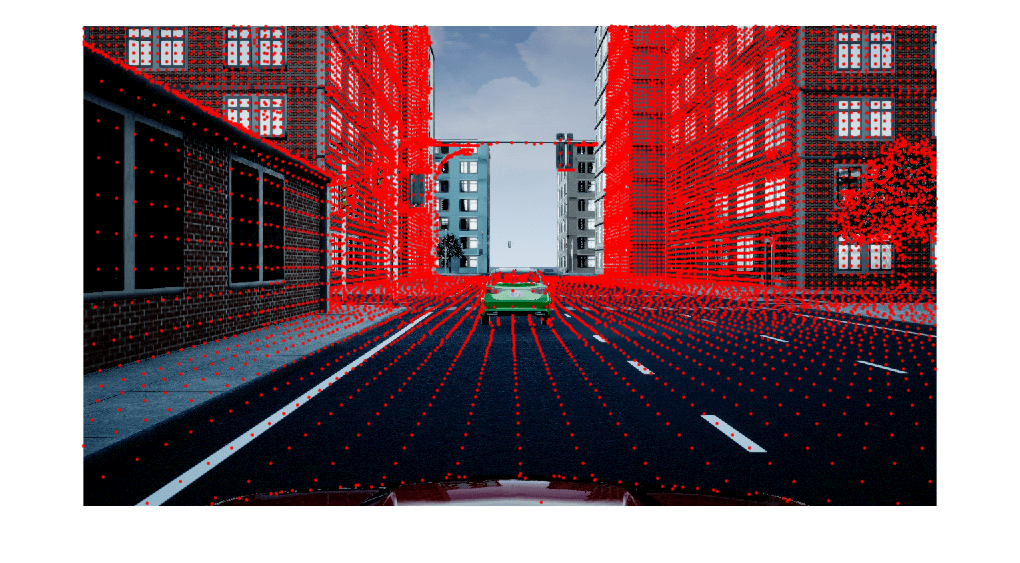projectLidarPointsOnImage
Project lidar point cloud data onto image coordinate frame
Syntax
Description
imPts = projectLidarPointsOnImage(ptCloudIn,intrinsics,tform)tform, and a set of camera
intrinsic parameters, intrinsics. The output imPts
contains the 2-D coordinates of the projected points in the image frame.
imPts = projectLidarPointsOnImage(worldPoints,intrinsics,tform)
[___] = projectLidarPointsOnImage(___,
specifies options using one or more name-value arguments in addition to any combination of
arguments in previous syntaxes. For example, Name,Value)'ImageSize',[250 400] sets
the size of the image on which to project the points to 250-by-400 pixels.
